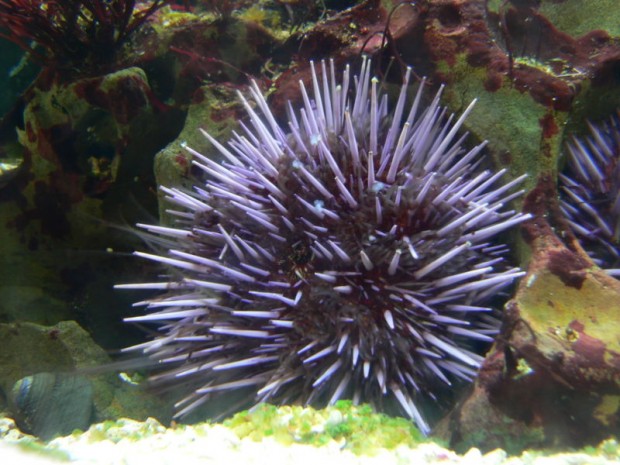
Most species of sea urchin feed by scraping undersea rocks, paring bits of algae away with their formidable, radially-arranged teeth. Despite this constant grinding, these teeth never dull and a team of researchers based at the University of Wisconsin now think they’ve explained how that’s possible. As the scientists describe in their article in the journal Advanced Functional Materials, the teeth are composed from a mosaic of calcite minerals interleaved with organic materials. In use, the constantly-growing teeth cleave at nanoindentations in the mosaic, perpetually renewing the cutting edge.
I thought that the problem of the eversharp edge had long ago been solved:
Unlike the knives of late-night advertising, the teeth of Strongylocentrotus purpuratus, the common Pacific urchin scrutinized in this study, aren’t a gimmick. But they also don’t come with a matching fork for easy carving. Nonetheless, their structure offers the prospect of future materials that may renew their sharpness perpetually and hint at future technologies that are ever less distinguishable from living things.
 Gearfuse Technology, Science, Culture & More
Gearfuse Technology, Science, Culture & More

